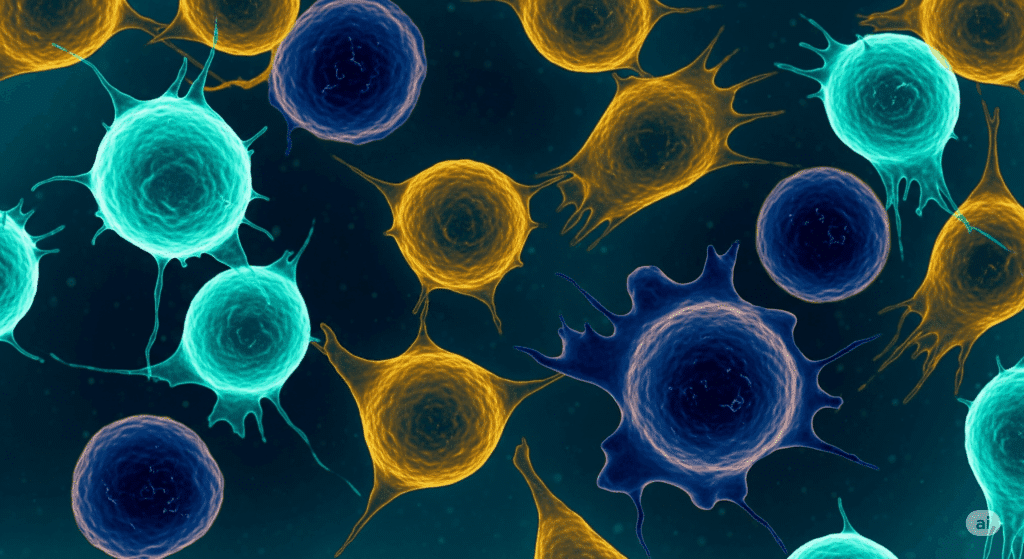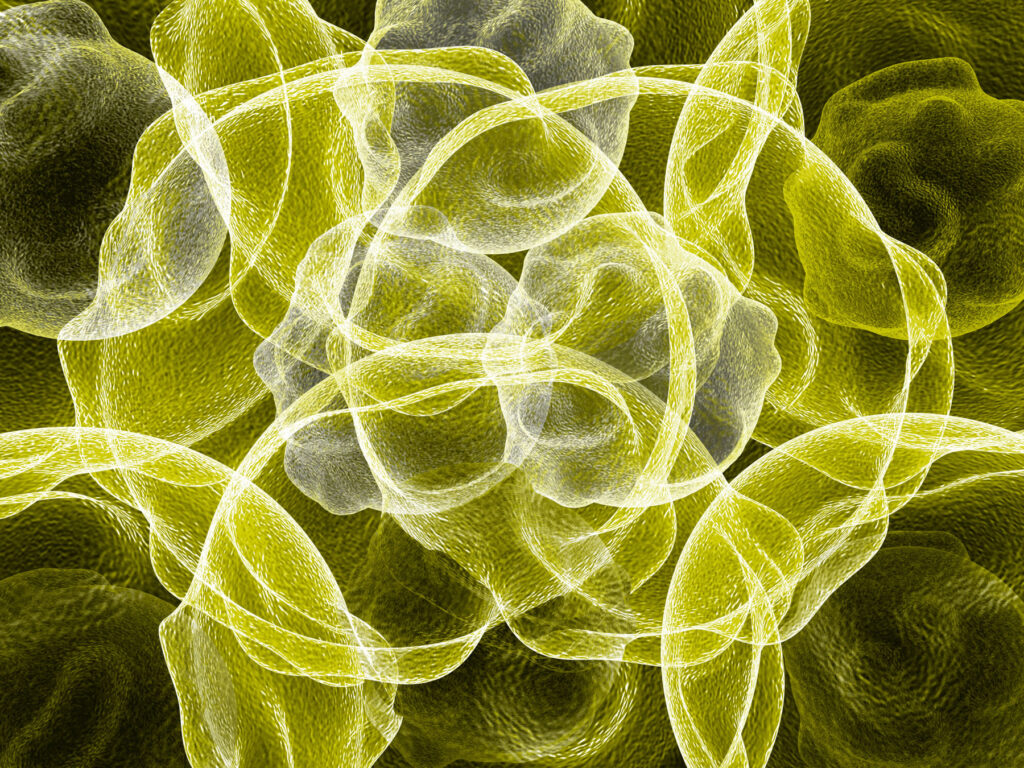Leading companies within the cell therapy field, such as Bristol Myers Squibb and Kyverna Therapeutics, are now advancing CAR-T programs in challenging autoimmune diseases, potentially opening a vast new market for cell therapies beyond cancer. However, the success of this shift may be reliant on improved scalability. Recent high-profile deals and acquisitions reveal an evolution from autologous therapies to scalable allogeneic platforms. The emergence of in vivo engineering approaches is also now well underway, and has been hailed as potentially revolutionary for the cell therapy landscape. For innovators in this space, a critical question is how to develop an IP strategy that supports and mirrors the pace of innovation within such a complex and multifaceted IP landscape.
From Personalised Potency to Scalable Solutions
The central challenge for cell therapy has always been one of logistics and scale. The first approved Chimeric Antigen Receptor (CAR) T-cell therapies are autologous, i.e. based on a patient’s own cells. These are then genetically modified outside the body (ex vivo) before being reinfused into the same individual. This approach offers perfect immunological compatibility, but its “one-patient, one-batch” manufacturing model is a fundamental barrier to broad accessibility. The complex vein-to-vein time can take weeks. One industry-leader, Kite Pharma, recently celebrated reducing its median turnaround time from 16 to just 14 days, a delay that patients with rapidly progressing disease cannot afford. Furthermore, the bespoke process leads to extremely high costs, with list prices often exceeding $400,000 per treatment.
In response, the industry is pursuing allogeneic or off-the-shelf alternatives to the autologous approach. Allogeneic cell therapy uses cells from a single healthy donor to create a master cell bank that can be used to manufacture standardised, cryopreserved treatments for many patients. The approach promises to democratise access and reduce costs by decoupling manufacturing from the individual. The primary scientific hurdle for allogeneic cells is immunological, requiring complex gene editing to prevent the donor cells from attacking the patient (Graft-versus-Host Disease) or being rejected by the patient’s immune system. This often involves techniques like knocking out the T-cell receptor (TCR) to prevent GvHD and beta-2 microglobulin (B2M) to evade recognition by the patient’s immune cells.
Representing a further potential revolution in cell therapy is the shift of focus to in vivo cell therapy approaches, which aims to eliminate ex vivo manufacturing entirely. In vivo approaches involve delivering gene-editing machinery directly into the patient’s body, for example via viral vectors or lipid nanoparticles (LNPs), to engineer the therapeutic cells in situ. This approach was recently and powerfully demonstrated by Intellia Therapeutics and Regeneron, who showed successful systemic, LNP-delivered CRISPR-Cas9 gene editing in the liver to treat transthyretin (ATTR) amyloidosis. Whilst nascent, this modality promises a truly scalable, cost-effective, and potentially curative treatment model that has attracted substantial strategic investment.
Navigating the modality minefield
The evolution across the three different cell therapy modalities is not just a scientific story, it is a commercial and strategic one reflected by a flurry of recent high profile deals and clinical milestones. The autologous space continues to mature, with companies like BioNTech investing heavily in manufacturing partnerships, including its $250 million manufacturing collaboration with Autolus Therapeutics announced last year. At the same time, major regulatory shifts, such as the FDA’s June 2025 elimination of Risk Evaluation and Mitigation Strategies (REMS), are reducing access burdens, even as new long-term safety concerns emerge, highlighted by the FDA’s January 2024 mandate for a class-wide boxed warning regarding the risk of secondary T-cell malignancies.
For off-the-shelf approaches, the first significant milestone was the EU approval of Atara Biotherapeutics’ Ebvallo in December 2022, the world’s first allogeneic T-cell therapy. The ongoing interest in allogeneic platforms is clear from significant merger and acquisition activity, such as Roche’s November 2024 deal to acquire Poseida Therapeutics for up to $1.5 billion to gain access to its allogeneic pipeline. However, the current focus of excitement is clearly in vivo approaches, with the hot-off-the-press announcement of Gilead/Kite’s $350 million acquisition of Interius BioTherapeutics this month and AstraZeneca’s acquisition of EsoBiotec for up to $1 billion earlier this year. These deals demonstrate a trend towards large pharma buying start-ups with proprietary delivery platforms to ensure they are not left behind by the next wave of innovation (Evolve Insights).
But how do these different commercial and scientific realities translate into IP strategy?
IP Strategy for autologous therapies
For autologous products, the IP strategy has historically focused on the core components, particularly the CAR construct itself and the vectors used for genetic modification. However, the IP landscape for established targets like CD19 and BCMA is now incredibly crowded and has been the subject of intense litigation, such as the notable dispute between Juno Therapeutics and Kite Pharma over CAR construct patents (Evolve Insights). For new biotech companies entering this space with a new targeting molecule for an existing target, the patentability challenges are significant. It is not enough simply to have a different sequence to design around existing IP. In Europe, in particular, the EPO will require data demonstrating that your invention works better than the prior art (Evolve Insights). Innovators must show that their new CAR or TCR provides an unexpected effect, such as improved efficacy or a better safety profile. Without this, even a novel invention may be considered obvious. Of course, an alternative approach is to make use of existing target molecule IP that has expired. However, the challenge then becomes one of commercial differentiation.
IP Strategy for Allogeneic Therapies
The move to allogeneic platforms presents both opportunities and challenges for IP protection. The proprietary gene-editing strategies used to make a cell “universal”, such as knocking out the T-cell receptor to prevent GvHD, can be defined and protected in a patent, the Cellectis TALEN strategy being one such example. However, many of the foundational techniques for establishing hypo-immunogenicity have been known for decades, with early players in the field having secured broad patents for some of the fundamental approaches, such as the knockdown of β2M and the knockdown and overexpression of various HLA genes. See for example, the Harvard patent US11492591 B2, covering various HLA gene modifications that are now standard in the field, and Cellectis’ patent EP3116902B1, covering β2M and/or CIITA knockdown in CAR-T cells.
Another problem for new players entering the field is the fact that much of the pre-existing patents for targeting molecules, such as CARs, will generally cover the molecule per se and be agnostic as to whether the cell expressing the CAR is autologous or allogeneic-derived, and may even broadly cover the targeting approach. A core patent for BMS’s on-market cell therapy Breyanzi (lisocabtagene maraleucel), for example, covered an anti-CD19 CAR defined only by the amino acid sequence of its CD3ζ signalling domain (US9856322).
Navigating a path that provides both patentability for a new allogeneic platform and freedom to operate (FTO) in view of the existing IP is challenging, but not impossible. As usual, the best strategy for an effective IP strategy is to follow the science. Truly innovative science that solves a technical problem in the field will always be the best starting point for strong and robust IP, in terms of both patentability and FTO. A genuinely new and inventive approach to solving the problem of immune rejection is more likely to be patentable and to fall outside the scope of older, broader patents.
IP strategy for in vivo therapies
For the emerging and highly exciting modality of in vivo cell therapy, the IP landscape is still being written, creating a huge opportunity for innovators. Here, the IP landscape is shifting from the therapeutic payload (the CAR) to the delivery mechanisms, although both elements remain important. Whether using novel lentivectors or highly engineered LNPs, the delivery technology is the key enabling component, and protecting it is paramount. Foundational IP, such as the CRISPR-Cas9 patents disputed between the CVC group (UC Berkeley) and the Broad Institute, dictates the freedom to operate for many applications, but new IP is being built around next-generation editors (like Beam Therapeutics’ base editing).
The IP landscape for the delivery vehicles used for in vivo approaches is also complex, given the overlap of these platform technologies with other fields such as vaccines and gene therapy. IP strategy in this area therefore needs to focus on protecting the cell therapy specific aspects of the technology, such as the strategies needed to target the delivery vectors to the cells of interest whilst avoiding off-target effects. As with allogeneic platforms, the more innovative the scientific approach, the greater the likelihood of securing strong patent protection with clear FTO. The recent flurry of high-value acquisitions in this space demonstrates the immense value that big pharma places on owning these next-generation delivery platforms. These acquisitions appear to represent strategic moves to secure a future pipeline of products based on a platform technology, particularly for the expansion into autoimmune diseases, where the manufacturing limitations of autologous therapy will be most acute and where “off-the-shelf” or in vivo solutions will be essential for success (Evolve Insights).
Final Thoughts
The cell therapy field is a rapidly evolving ecosystem. The choice of modality is increasingly dictated by the specific disease, the urgency of treatment, and the long-term commercial vision. Autologous therapies have proven their curative potential and will likely remain the standard of care in high-risk cancers where their persistence is a key advantage. Allogeneic therapies are poised to broaden access, particularly in autoimmune diseases where on-demand availability is critical for managing acute flares. In the long term, in vivo engineering holds the ultimate promise of democratizing these powerful medicines.
For companies navigating this complex landscape, the scientific and IP race is on. A sophisticated and forward-looking IP strategy is crucial. The value proposition is clearly shifting from a single product to the versatile, underlying, and patent-protected platform that can generate a pipeline of therapies across multiple diseases. In such a dynamic field, the best approach is to focus on truly innovative science as the surest path to achieving a strong and defensible IP position.
At Evolve, we are experts in IP strategy for advanced therapies and biotech inventions. We have extensive experience developing and coordinating IP strategy for cell therapy with regulatory and manufacturing business functions. Do you need advice on how to protect your cell therapy technology? We would love to hear from you.
Further reading
- Falling between the cracks: The challenges of patent strategy for stem cell therapies (T 1259/22)
- Beyond the process: Securing robust IP protection for cell therapies
- Securing market protection for cell therapies: Patents versus regulatory exclusivity
- Too broad, too early? AI platform for cell analysis found to lack technical character and sufficiency (T 0660/22, Cell analysis/NIKON)
- Defining the undefinable: The challenges and opportunities for cell therapy IP
- Non-reproducible commercial products are prior art (G1/23)
- The reproducibility challenge for advanced therapies (T 0827/23)
Author: Rose Hughes









